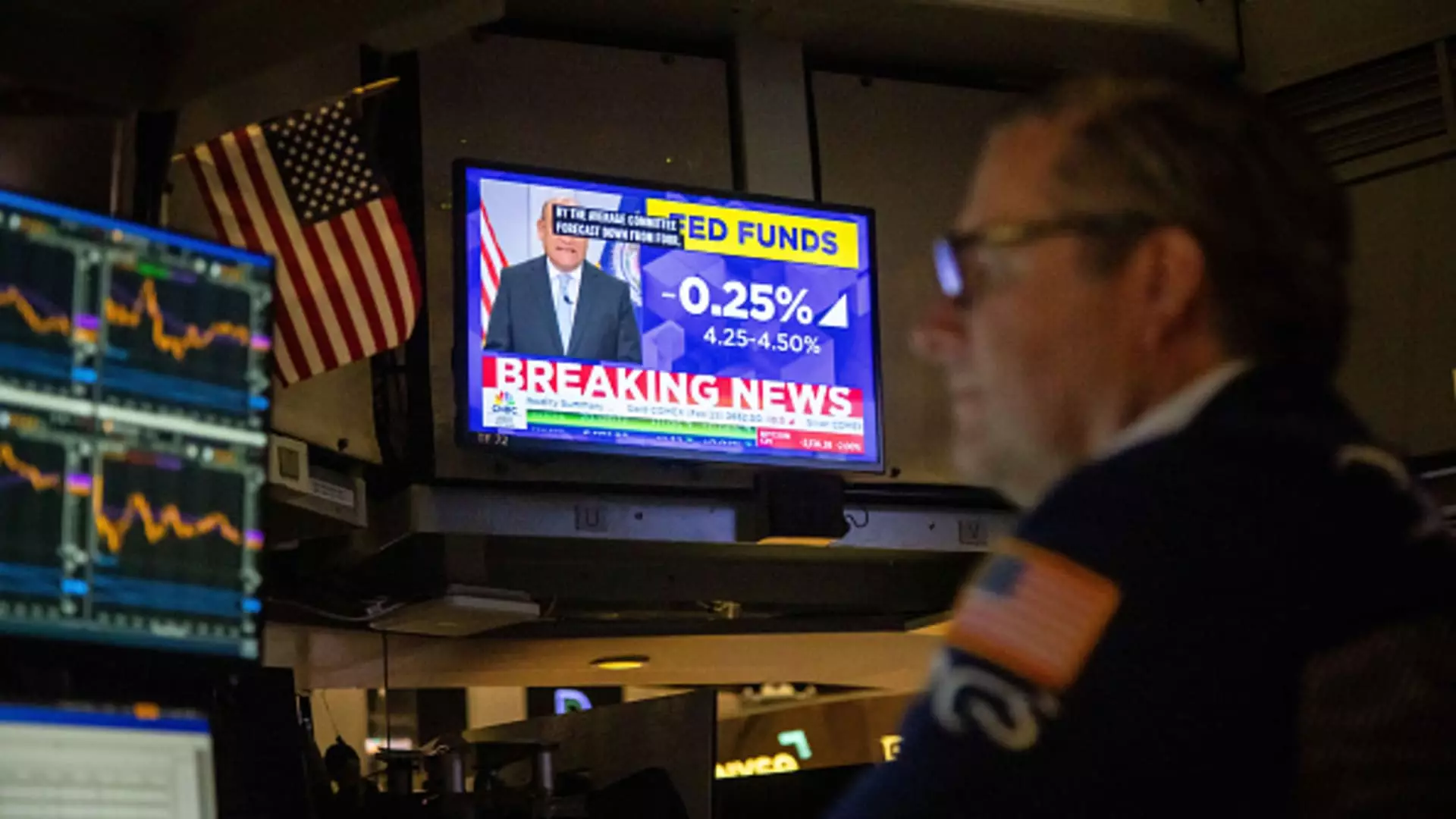In an unexpected twist that sent shockwaves through Wall Street, the Federal Reserve announced its intention to slow down its previously anticipated rate-cutting strategy. On Wednesday, this news ignited a significant spike in market volatility, as illustrated by the dramatic leap in the CBOE Volatility Index, commonly referred to as the VIX. The index soared a staggering 74%, reaching a closing value of 27.62, illustrating the tumultuous sentiment among investors. Such sharp increases in the VIX are rare, with this surge marking the second largest percentage increase in its history.
Investors had previously been banking on a more aggressive reduction in interest rates, expecting four cuts in the upcoming year. The Fed’s shift in tone, however, disheartened many market participants who relied on consistently low-interest rates to sustain the ongoing bull market. This has resulted in a panic-driven atmosphere within the stock market, evidenced by the Dow Jones Industrial Average’s precipitous drop of 1,100 points — marking its 10th consecutive loss.
Typically, the VIX, which measures expected market volatility based on options pricing for the S&P 500, indicates investor sentiment and risk appetite. A reading above 20 is generally associated with heightened market anxiety. For most of the year, the VIX remained relatively subdued, often floating below this critical threshold. This prolonged period of low volatility led to concerns that complacency had taken hold among market participants, setting the stage for an eventual correction.
The spike observed on Wednesday leads many to believe that investors were hastily scrambling to acquire put options as a hedge against further declines. This protective move signifies a sharp pivot in sentiment, transforming from a wait-and-see approach to an urgent need to safeguard portfolios from impending losses.
While this week saw a momentous surge in the VIX, it is worth noting that this is not an isolated event in the current economic climate. Earlier in the year, the index also experienced a notable increase due to concerns surrounding a potential U.S. recession and the unwind of carry trades, particularly affecting the yen. On August 5, 2024, the VIX surged nearly 65% and spiked intraday above 65, revealing just how jittery investors had become in the face of uncertain macroeconomic conditions.
As of Thursday, the VIX stabilized slightly above the 20 mark, indicating that while the initial panic may have eased, the environment remains fraught with uncertainty. This fluctuation underscores that even in the aftermath of such significant market moves, volatility likely remains a dominant theme as investors continue to process the Fed’s intentions and their implications for future economic stability.
The recent developments are a stark reminder of the delicate dynamics at play within the financial markets, with the VIX acting as a bellwether for investor sentiment. As economic conditions evolve, navigating this new normal will require careful analysis and a keen understanding of not just market movements, but also the underlying factors driving these changes. Investors and analysts alike must remain vigilant, ready to adapt to shifting tides in both policy and market psychology.

